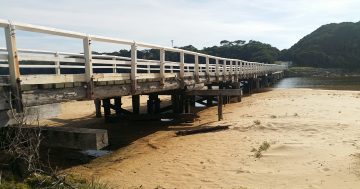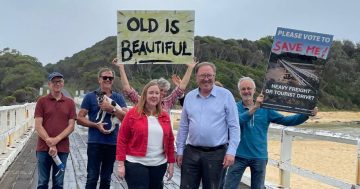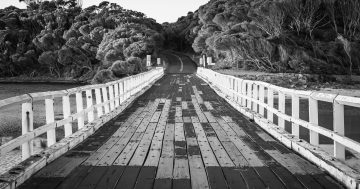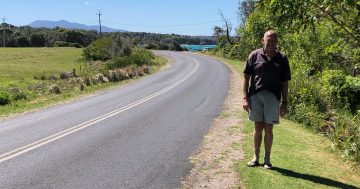
528 people responded to a Bega Valley Shire Council survey, indicating the community continues to care deeply about Cuttagee Bridge. Photo: David Rogers Photography.
Bega Valley Shire Council’s Cuttagee Bridge community survey showed that 70 per cent of people want the bridge rebuilt as a single lane one made primarily from timber.
The Save Cuttagee Bridge Group (SCBG) accessed the survey, which closed on 30 April, through freedom of information.
SCBG spokesperson Sheena Boughen said the survey results were clearly a matter of public interest. There have been well-supported public protests and town meetings since council first signalled its intention to replace the single-lane timber bridge with a two-lane concrete one.
Ms Boughen said that after the issue was covered on ABC TV and radio on 1 August the number of names on a petition to save the bridge was increasing again and would soon reach 15,000.
The council survey received 528 responses, 82 per cent from people living locally.
To put that into context, six weeks after the draft Batemans Bay master plan went on public exhibition, Eurobodalla Shire Council had received 120 submissions which it said was a “fantastic response”, adding 25 submissions was generally considered a good response.
“Bega Valley Shire Council’s own website states its commitment to incorporating community opinion into decisions and we feel certain that councillors would want to know what local people think before they make a decision about Cuttagee Bridge,” Ms Boughen said. “Would the results have been published had the survey shown a community preference for a two-lane concrete bridge?”
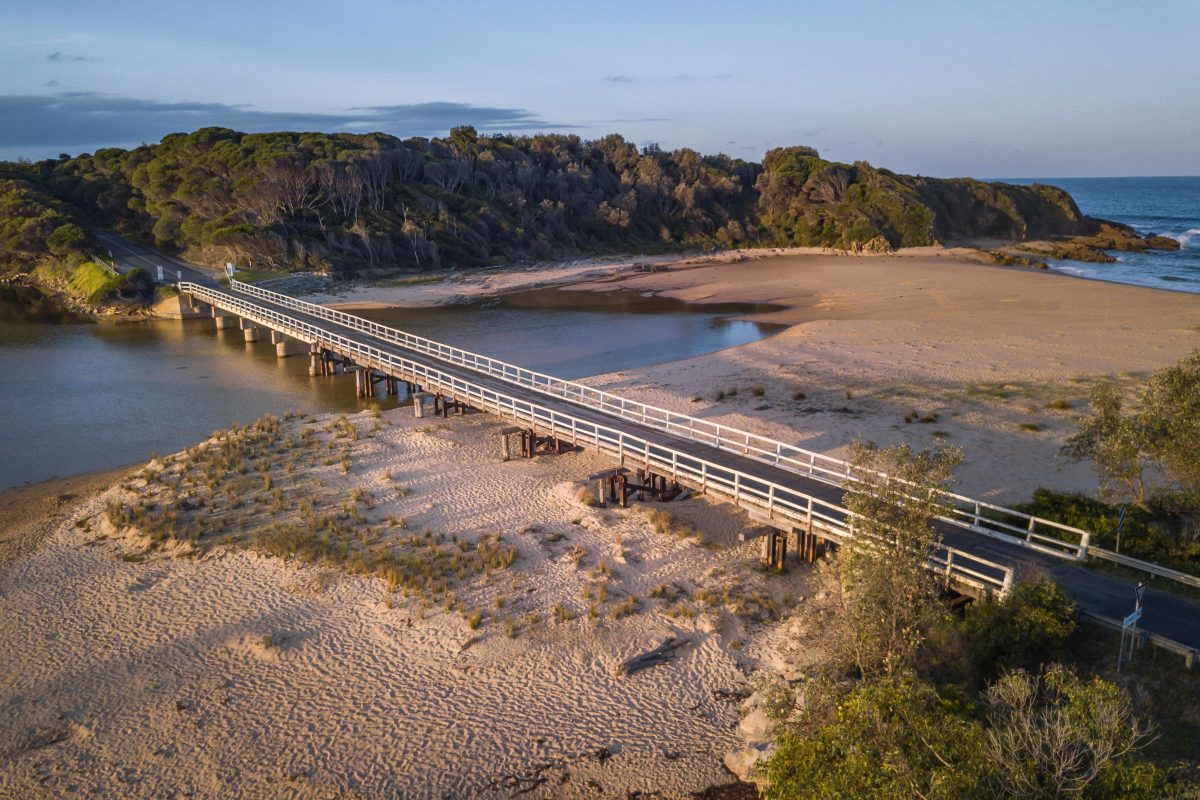
Originally built in 1892, Cuttagee Bridge is a one-lane heritage bridge that requires cars to slow down and take turns to cross. Photo: David Rogers Photography.
In a statement, council said the survey feedback had been shared with its designers to aid in the development of the conceptual designs.
“It is important to clarify that our intention was never to publish the survey results as a standalone document. Instead, we aimed to gather targeted information concerning the three design options explicitly mentioned in the funding deed. This information will primarily assist the designers, rather than introducing alternative options not previously agreed upon.
“The survey is part of a broader stakeholder engagement strategy and will contribute to a comprehensive report that will be presented to councillors before a preferred option from the three concepts is adopted for further design development.”
Council staff said in April that councillors would make the comparison based on designs developed to 20 per cent, not finished with all the detail.
“Ultimately, the elected council will decide on the bridge replacement, and a summary of insights from the survey, along with other information sources, will be shared with both councillors and the community at a later date,” the statement said.
Ms Boughen said SCBG was informally advised that the design process had been delayed.
“We understand the three design options will be on public exhibition in Bermagui and Bega in September and then will go to councillors, probably in October,” Ms Boughen said.
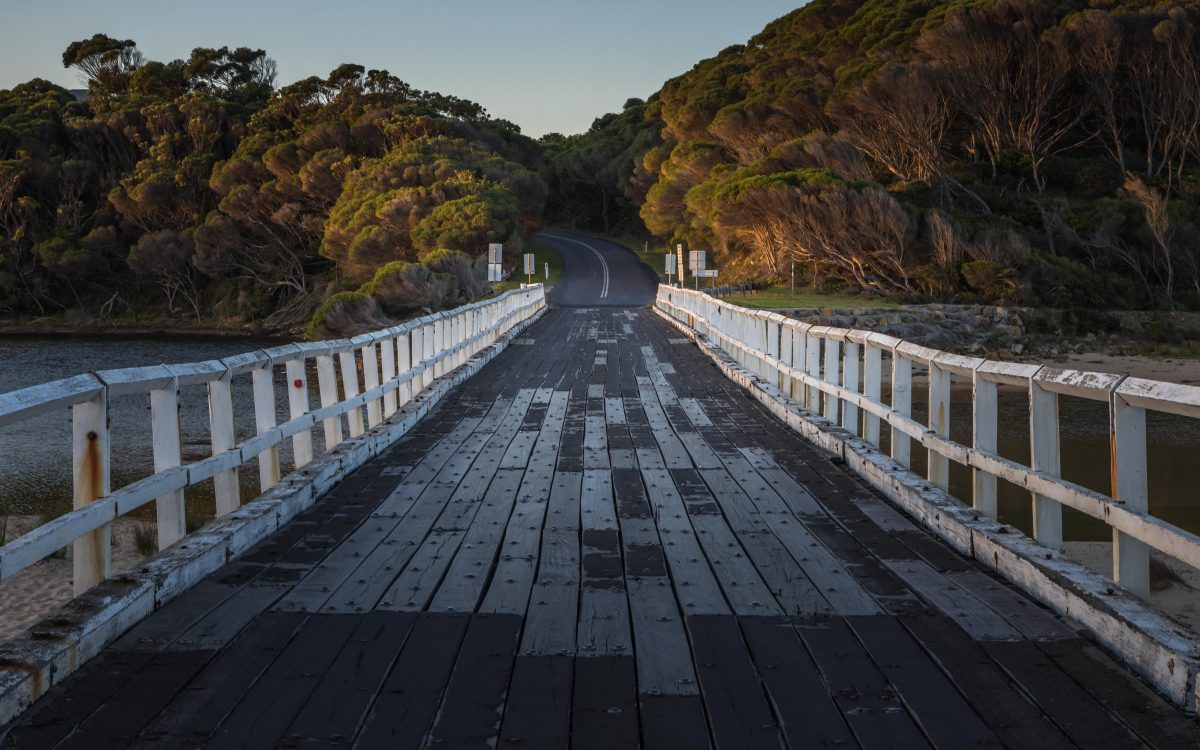
The NSW Government is funding the rebuild of Cuttagee Bridge and stipulates that proper consideration be given to community opinion and the history of the bridge. Photo: David Rogers Photography.
SCBG will continue to do its best to keep the community informed of the process.
The group will also speak to each councillor explaining it wants a one-lane bridge that honours the existing bridge’s timber heritage and character because it is safer, more affordable, more sustainable, satisfies the State Government’s funding deed for a restoration in line with heritage principles, and fits with the aesthetics and cultural tone of the area, namely being in nature.
Ms Boughen said a concrete bridge at Mogareeka partly washed away in the 1971 floods.
Since Ms Boughen spoke about Cuttagee Bridge on radio and television it has caught people’s attention.
“People are saying to us it would be heresy to have a two-lane concrete bridge,” she said. “They are saying surely the council realises it is critical to protect that string of one-lane bridges on an important tourist road. To us, community isn’t just the people who live here permanently. It is also people who live here part-time and who visit and spend money here.”
Ms Boughen said concrete was an old solution and timber was increasingly being used as a progressive building material.
Sweden, for example, is building the Stockholm Wood City. With 7000 office spaces and 2000 houses, it is the world’s largest timber city project.
“Timber is the new black. That is the thing we find most frustrating,” Ms Boughen said. “It may be an old bridge, but it requires new thinking. Contemporary thinking is timber is a more progressive and modern material to use.”








